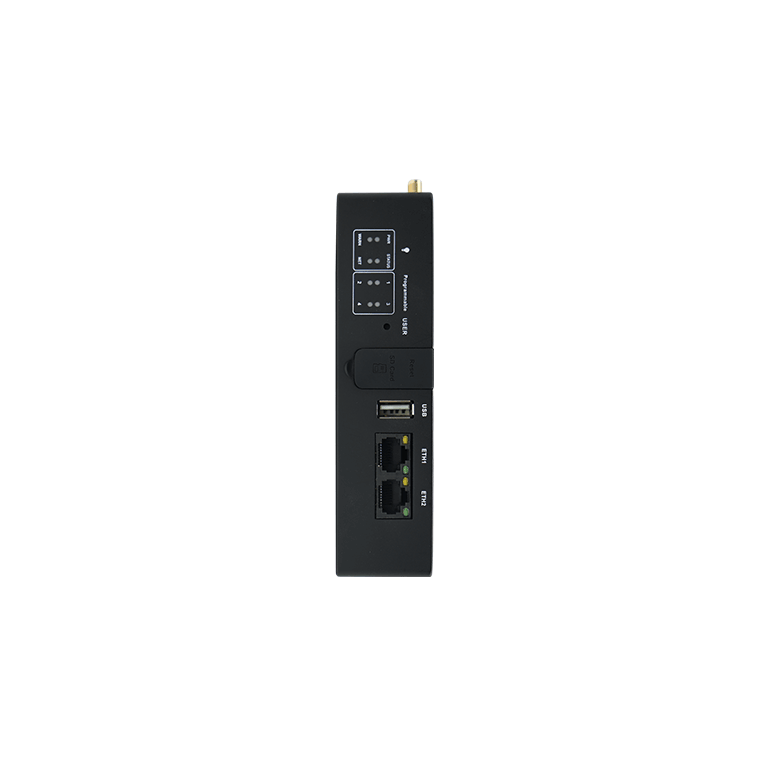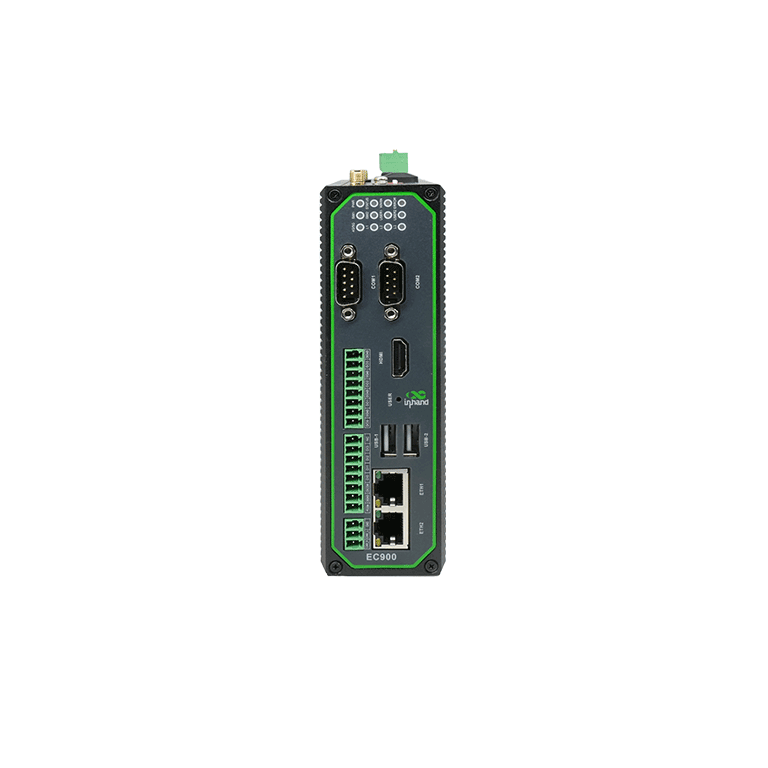
Die Trusted Platform Module (TPM)-Technologie ist eine hardwarebasierte Sicherheitslösung, die eine robuste Grundlage für Geräteintegrität und sicheres Computing bietet. Da das Internet der Dinge (IoT) und das Edge-Computing immer weiter zunehmen, spielt das TPM eine entscheidende Rolle bei der Gewährleistung der Sicherheit und Zuverlässigkeit von verbundenen Geräten. Dieser Artikel befasst sich mit der TPM-Technologie, ihrer Bedeutung und ihren Anwendungen in IoT-Edge-Computing-Umgebungen.
Was ist die TPM-Technologie?
TPM (vertrauenswürdiges Plattformmodul) ist ein spezialisierter Mikrocontroller, der für die Sicherung von Hardware durch integrierte kryptografische Schlüssel entwickelt wurde. Er bietet eine Vielzahl von Sicherheitsfunktionen, darunter die hardwarebasierte Zufallszahlengenerierung, die sichere Generierung kryptografischer Schlüssel und die Fernbescheinigung. TPMs werden häufig zur Sicherung von PCs, Servern und zunehmend auch von IoT-Geräten eingesetzt.
Hauptmerkmale der TPM-Technologie
Kryptographische Operationen
Das TPM kann verschiedene kryptografische Operationen durchführen, z. B. Schlüsselgenerierung, Ver- und Entschlüsselung, um die Sicherheit sensibler Daten zu gewährleisten.
Unterstützung von Secure Boot
Das TPM hilft bei der Implementierung von Secure Boot, indem es Schlüssel speichert und verwendet, um die Integrität des Bootloaders und der Firmware während des Bootvorgangs zu überprüfen.
Fern-Attestierung
TPM ermöglicht eine Fernprüfung, so dass Geräte ihre Integrität gegenüber Dritten nachweisen können, indem sie einen Hash der Software und der Konfigurationsdaten erzeugen, der aus der Ferne überprüft werden kann.
Integrität der Daten
Das TPM stellt die Datenintegrität sicher, indem es kryptografische Hashes von kritischen Daten erstellt und speichert, die zur Erkennung unbefugter Änderungen verwendet werden können.
Die Bedeutung von TPM im IoT Edge Computing
Verbesserung der Gerätesicherheit
Beim IoT-Edge-Computing werden die Geräte oft in unkontrollierten und potenziell feindlichen Umgebungen eingesetzt. Das TPM bietet eine solide Sicherheitsgrundlage, die diese Geräte vor verschiedenen Bedrohungen schützt.
Sicherstellung von Datenintegrität und Datenschutz
Das TPM sichert sensible Daten durch Verschlüsselung und kryptografische Operationen und gewährleistet, dass die Daten vertraulich und fälschungssicher bleiben.
Ermöglichung einer sicheren Kommunikation
Durch die Generierung und Verwaltung kryptografischer Schlüssel erleichtert das TPM die sichere Kommunikation zwischen IoT-Geräten und dem zentralen Server und schützt die Daten während der Übertragung.
Unterstützung der Einhaltung von Sicherheitsstandards
Die Implementierung der TPM-Technologie hilft Unternehmen bei der Einhaltung verschiedener Sicherheitsstandards und -vorschriften und gewährleistet, dass ihre IoT-Geräte sicher und vertrauenswürdig sind.
Wie TPM funktioniert
Schlüsselkomponenten des TPM
- Vermerksschlüssel (EK): Ein eindeutiger RSA-Schlüssel, der bei der Herstellung in das TPM eingebrannt wird und zur Bescheinigung und Verschlüsselung dient.
- Speicherwurzelschlüssel (SRK): Ein vom TPM erzeugtes Schlüsselpaar zur Verschlüsselung anderer im TPM gespeicherter Schlüssel.
- Plattform-Konfigurationsregister (PCRs): Spezielle Register im TPM, in denen Messungen des Systemzustands gespeichert werden und die eine Möglichkeit zur Überprüfung der Systemintegrität bieten.
TPM-Betrieb
- Schlüsselerzeugung und -speicherung: Das TPM erzeugt kryptografische Schlüssel und speichert sie sicher im Modul.
- Unterstützung von Secure Boot und Attestierung: Während des Startvorgangs hilft das TPM bei der Überprüfung der Integrität des Systems, indem es Schlüssel speichert und verwendet und in PCRs gespeicherte Messungen vergleicht.
- Verschlüsselung und Entschlüsselung: Das TPM führt kryptografische Operationen durch, um Daten zu sichern und ihre Vertraulichkeit zu gewährleisten.
- Fern-Attestierung: Das TPM kann einer entfernten Partei die Integrität des Geräts bescheinigen, indem es einen Hash der Software und der Konfigurationsdaten erzeugt und so einen Mechanismus zur Vertrauensüberprüfung bereitstellt.
Anwendungen von TPM im IoT Edge Computing
Absicherung von Edge-Geräten
TPM bietet eine hardwarebasierte Vertrauensbasis für Edge-Geräte und stellt sicher, dass nur autorisierte Software und Firmware auf diesen Geräten ausgeführt werden kann.
Verbessern der Geräteauthentifizierung
TPM ermöglicht eine sichere Geräteauthentifizierung und stellt sicher, dass nur vertrauenswürdige Geräte auf das Netzwerk zugreifen und mit anderen Geräten kommunizieren können.
Schutz von Daten im Ruhezustand und bei der Übermittlung
Das TPM gewährleistet die Vertraulichkeit und Integrität von Daten sowohl im Ruhezustand als auch bei der Übertragung, indem es seine kryptografischen Fähigkeiten nutzt.
Sichere Firmware-Updates aktivieren
Das TPM unterstützt sichere Firmware-Updates, indem es die Integrität und Authentizität der Firmware überprüft, bevor sie auf dem Gerät installiert werden kann.
Implementierung von TPM in IoT Edge Computing
Integration des TPM in die Firmware
Bei der Integration des TPM in die Gerätefirmware muss das TPM so konfiguriert werden, dass es nahtlos mit dem Boot-Prozess und dem Betriebssystem des Geräts zusammenarbeitet.
TPM-Schlüssel und -Zertifikate verwalten
Eine effektive Schlüssel- und Zertifikatsverwaltung ist entscheidend für die Nutzung der TPM-Sicherheitsfunktionen. Dazu gehört die sichere Erzeugung, Speicherung und Rotation von Schlüsseln.
Regelmäßige Überwachung und Audits
Die regelmäßige Überwachung und Überprüfung von TPM-fähigen Geräten trägt dazu bei, dass das TPM korrekt funktioniert und das Gerät sicher bleibt.
Vorteile von TPM im IoT Edge Computing
Verbesserte Sicherheitsposition
Das TPM verbessert die Sicherheitslage von IoT-Edge-Geräten erheblich, da es eine hardwarebasierte Vertrauensbasis und robuste kryptografische Operationen bietet.
Geringeres Risiko von Cyberangriffen
Durch die Sicherung von Boot-Prozessen, Daten und Kommunikation reduziert TPM das Risiko von Cyber-Angriffen, einschließlich Malware und unbefugtem Zugriff.
Erhöhtes Vertrauen und Verlässlichkeit
Die Implementierung von TPM schafft Vertrauen bei Kunden und Stakeholdern, da es gewährleistet, dass IoT-Geräte sicher und zuverlässig sind.
Herausforderungen und Überlegungen
Probleme mit der Kompatibilität
Die Sicherstellung der Kompatibilität zwischen TPM und verschiedenen Hardware- und Softwarekomponenten kann bei der Implementierung eine Herausforderung darstellen.
Leistungsbezogene Gemeinkosten
TPM-Operationen können zu Leistungseinbußen führen, die verwaltet werden müssen, um die Funktionalität des Geräts nicht zu beeinträchtigen.
Komplexität der Schlüsselverwaltung
Die Verwaltung der für TPM erforderlichen Schlüssel und Zertifikate kann sehr komplex sein und erfordert spezielle Ressourcen und Fachkenntnisse.
Zukünftige Trends bei TPM für IoT Edge Computing
Integration mit KI und maschinellem Lernen
Zukünftige Entwicklungen könnten eine Integration von TPM mit KI und maschinellem Lernen vorsehen, um die Fähigkeiten zur Erkennung von und Reaktion auf Bedrohungen zu verbessern.
Verbesserte Interoperabilität
Die Bemühungen um eine verbesserte Interoperabilität werden die Implementierung von TPM auf verschiedenen IoT-Geräten und -Plattformen erleichtern.
Automatisierte Schlüsselverwaltungssysteme
Fortschritte bei automatisierten Schlüsselverwaltungssystemen werden die Implementierung und Wartung von TPM in IoT-Umgebungen vereinfachen.
TPM: Bewährte Praktiken
Gründliche Prüfung
Führen Sie gründliche Tests durch, um sicherzustellen, dass das TPM korrekt implementiert ist und wie vorgesehen funktioniert.
Regelmäßige Audits
Führen Sie regelmäßig Sicherheitsaudits durch, um potenzielle Schwachstellen in der TPM-Implementierung zu ermitteln und zu beheben.
Aufklärung der Stakeholder
Aufklärung der Beteiligten, einschließlich der Entwickler und Benutzer, über die Bedeutung von TPM und die besten Praktiken zu dessen Aufrechterhaltung.
Schlussfolgerung
TPM ist eine grundlegende Technologie zur Gewährleistung der Sicherheit und Integrität von IoT-Edge-Computing-Geräten. Durch die Implementierung von TPM können Unternehmen ihre Geräte vor unbefugtem Zugriff und Cyberangriffen schützen und so die allgemeine Sicherheitslage ihrer IoT-Infrastruktur verbessern. Im Zuge der Weiterentwicklung der IoT-Technologie wird TPM auch in Zukunft eine wichtige Komponente zur Wahrung der Geräteintegrität und des Vertrauens bleiben.
Die Produkte der EC312- und EC954-Serie von InHand Networks unterstützen TPM-Funktionen und bieten damit robuste Sicherheit für IoT Edge Computing-Anwendungen.

